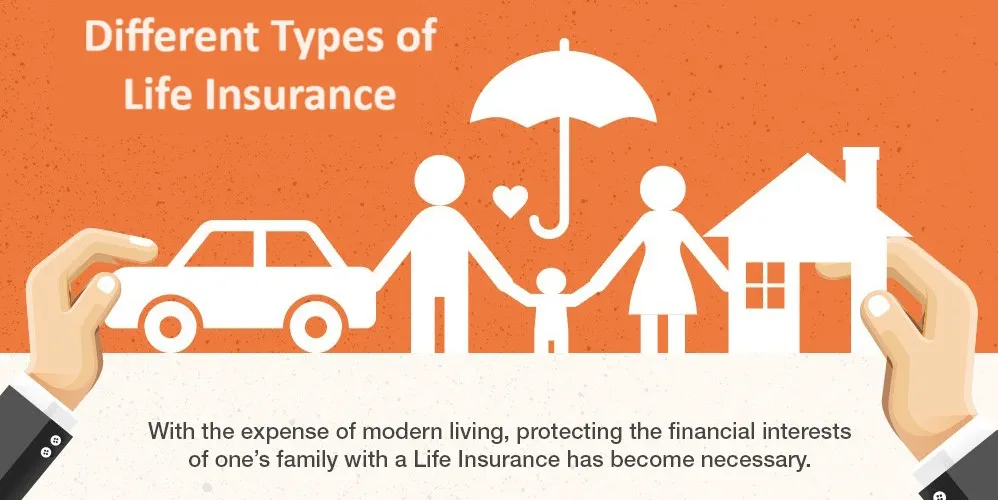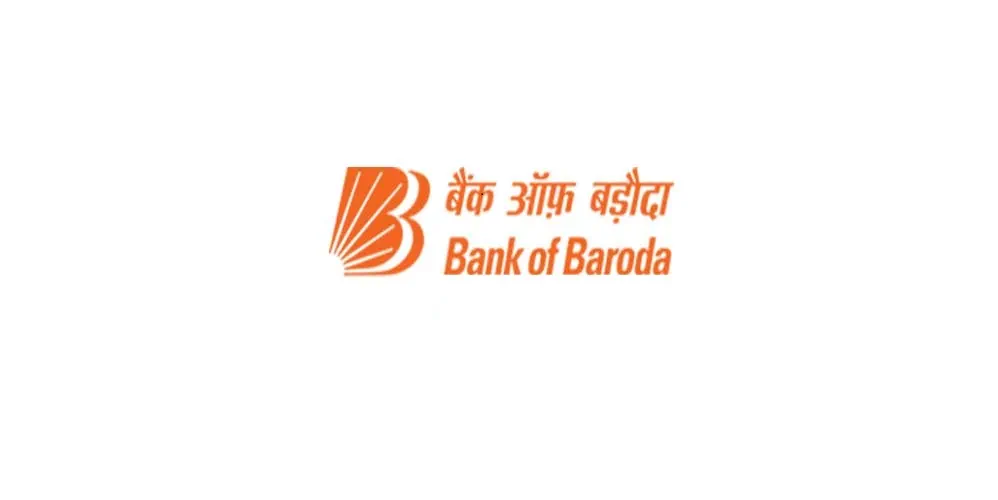
Different Types of Life Insurance - Which One is Right for You?
04 मार्च 2024

Table of Content
Getting a life insurance policy is one of the most responsible decisions you could ever take, as it ensures that your near and dear ones are not left behind without financial support in case of an unforeseen event. It stands as a crucial financial safeguard, offering protection and security for loved ones in the event of an unexpected tragedy. However, navigating the world of life insurance can be overwhelming due to the multitude of options available. Understanding the various types of life insurance can help individuals make informed decisions that align with their needs and financial goals, while safeguarding their loved ones.
But, before we proceed to the different types of life insurance and which one is best for you, let us understand what life insurance is and the importance of having one.
What is a Life Insurance?
Life insurance is a contractual agreement between an individual and an insurance company. In exchange for regular premium payments, the insurance company provides a lump-sum payment (the death benefit) to the beneficiaries named by the policyholder upon the death of the insured person. This payment is intended to provide financial protection to the family or beneficiaries in the event of the insured individual's death.
Why do we need Life Insurance?
Life insurance is a financial tool designed to provide a measure of financial security for your loved ones in the event of your death. Here are several reasons why having life insurance can be important:
Financial Security for Dependents :
If you have dependents such as children, a spouse, or aging parents who rely on your income to meet their financial needs, life insurance can provide them with financial security in case of your untimely death. It can help cover ongoing living expenses, mortgage payments, education costs, and other financial obligations.
Paying Off Debts and Expenses :
Life insurance can be used to pay off outstanding debts like a mortgage, car loans , or credit card bills, ensuring that your family doesn't inherit these financial burdens in case of a tragedy.
Tax Savings :
Life insurance helps you save on taxes, as you get tax deductions based on the premiums paid by you.
Types of Life Insurance
Now that we have understood the importance of having life insurance, let us move on to the different types of life insurance.
Term Life Insurance :
Term life insurance is one of the most straightforward and affordable types of coverage. It provides a death benefit to beneficiaries if the insured passes away within a specified term, typically ranging from 10 to 30 years. This type of insurance does not accumulate cash value and is generally preferred for its simplicity and lower premiums.
Also Read: Difference between Term Insurance and Whole Life Insurance
Whole Life Insurance :
Whole life insurance offers coverage for the entire life of the policyholder. It not only provides a death benefit but also accumulates cash value over time. This cash value can be accessed during the policyholder's lifetime, serving as a savings component. Whole life insurance premiums are higher compared to term life, but the policy offers stability and the potential for cash value growth.
Unit Linked Insurance Plan (ULIP) :
A ULIP stands for Unit Linked Insurance Plan. It is a financial product that combines insurance and investment in a single plan. ULIPs offer both life insurance coverage and an investment component. When you buy a ULIP , a part of your premium goes towards providing you with a life insurance cover, while the remaining amount is invested in various funds such as equity, debt, or a combination of both, based on your risk appetite.
Endowment Plan :
An endowment insurance plan is a type of life insurance policy that offers both a death benefit and a savings component. It combines insurance coverage with a savings or investment feature, providing a lump-sum payment either upon the policyholder's death or at the policy's maturity.
Money Back Insurance Plan :
A money-back insurance plan is a type of life insurance policy that offers both insurance coverage and periodic payments of a portion of the sum assured during the policy term. It combines elements of insurance coverage and savings/investment features. In simple terms, the insured person obtains a percentage of the sum assured at regular intervals. This plan is designed to help the policyholder meet short-term financial goals.
Child Insurance Plan :
A child insurance plan is a type of insurance specifically designed to secure a child's future financially. It's a long-term investment and protection tool that helps parents build funds for various milestones in their child's life, such as education, marriage, or other significant life events. These plans typically offer a combination of insurance coverage and savings components.
Retirement Insurance Plan :
A retirement insurance plan , as the name itself suggests, is a financial product designed to provide a source of income during retirement. These plans are typically offered by insurance companies and are intended to supplement other retirement income sources such as pensions, savings, or Social Security.
Choosing the right type of Life Insurance
Assess Your Needs :
Consider why you need life insurance, the duration of coverage, and the amount your beneficiaries would require to choose the best life insurance policy for you.
Evaluate Financial Situation :
Assess your budget and financial goals. Some policies may be more expensive but offer cash value or investment opportunities.
Understand Policy Features :
Review and understand the policy terms, premiums, coverage, and any additional benefits or riders offered.
Compare Options :
Obtain quotes from various insurance providers and compare different policies to find the most suitable and cost-effective one.
Seek Professional Advice :
Consulting with a financial advisor or insurance agent can help clarify doubts and make an informed decision.
In conclusion, life insurance is a crucial component of a comprehensive financial plan. The diverse range of life insurance options allows individuals to tailor their coverage to suit their specific circumstances. Seeking guidance from financial advisors can significantly aid in choosing the most suitable type of life insurance that provides security and peace of mind for the future.
Also Read: Benefits of Having Life Insurance
FAQs on Different Types of Life Insurance Policies
1. What is the difference between term life insurance and whole life insurance?
Term life insurance offers coverage for a specific period at lower premiums and lacks cash value, while whole life insurance provides lifelong coverage with consistent premiums, cash value accumulation, and potential dividends.
2. How does group insurance work?
Group insurance is offered by an employer or organization, providing coverage to a group of individuals, often with lower premiums due to collective bargaining power and shared risk.
3. What are the types of life insurance?
The most common types of life insurance include:
- Term Life Insurance
- Whole Life Insurance
- Unit Linked Insurance Plan
- Endowment Plan
- Money Back Insurance Plan
- Child Insurance Plan
- Retirement Insurance Plan
4. How often should I review my insurance policy?
It is essential to review your insurance policy at least once a year.
Popular Articles
What is Tenure in a Personal Loan and How to Choose the Loan Tenure Smartly?
Related Articles



What is CVV on a Debit Card? Understanding Its Importance and Security Features


How to Update Your FASTag KYC: Step-by-Step Guide for Online & Offline Methods




The Importance of Pension Funds: Secure Your Future with Steady Retirement Income

-
डिस्क्लेमर
इस लेख/इन्फोग्राफिक/चित्र/वीडियो की सामग्री का उद्देश्य केवल सूचना से है और जरूरी नहीं कि यह बैंक ऑफ बड़ौदा के विचारों को प्रतिबिंबित करे। सामग्री प्रकृति में सामान्य हैं और यह केवल सूचना मात्र है। यह आपकी विशेष परिस्थितियों में विशिष्ट सलाह का विकल्प नहीं होगा । बैंक ऑफ बड़ौदा और/या इसके सहयोगी और इसकी सहायक कंपनियां सटीकता के संबंध में कोई प्रतिनिधित्व नहीं करती हैं; यहां निहित या अन्यथा प्रदान की गई किसी भी जानकारी की पूर्णता या विश्वसनीयता और इसके द्वारा उसी के संबंध में किसी भी दायित्व को अस्वीकार करें। जानकारी अद्यतन, पूर्णता, संशोधन, सत्यापन और संशोधन के अधीन है और यह भौतिक रूप से बदल सकती है। इसकी सूचना किसी भी क्षेत्राधिकार में किसी भी व्यक्ति द्वारा वितरण या उपयोग के लिए अभिप्रेत नहीं है, जहां ऐसा वितरण या उपयोग कानून या विनियमन के विपरीत होगा या बैंक ऑफ बड़ौदा या उसके सहयोगियों को किसी भी लाइसेंसिंग या पंजीकरण आवश्यकताओं के अधीन करेगा । उल्लिखित सामग्री और सूचना के आधार पर किसी भी वित्तीय निर्णय लेने के लिए पाठक द्वारा किए गए किसी भी प्रत्यक्ष/अप्रत्यक्ष नुकसान या देयता के लिए बैंक ऑफ बड़ौदा जिम्मेदार नहीं होगा । कोई भी वित्तीय निर्णय लेने से पहले अपने वित्तीय सलाहकार से सलाह जरूर लें।
Difference between Term Insurance and Whole Life Insurance
In a world of endless options, where information flows ceaselessly, and choices multiply like rabbits, navigating the labyrinth of insurance can feel like a daunting task. And when it comes to the age-old debate between term insurance and whole life insurance, the confusion only deepens. The financial world seems to have a language of its own, a language that often leaves the average person feeling like an outsider.
Avoid Common Mistakes to File a Successful Insurance Claim
Insurance claims can be complex and overwhelming, especially when you're already dealing with the stress of an unfortunate event. Whether it's a car accident, property damage, or a medical emergency, filing an insurance claim is essential to receive the financial support you need. However, the process isn't always straightforward, and making mistakes can lead to delays, denials, or receiving a lower settlement than you deserve.

